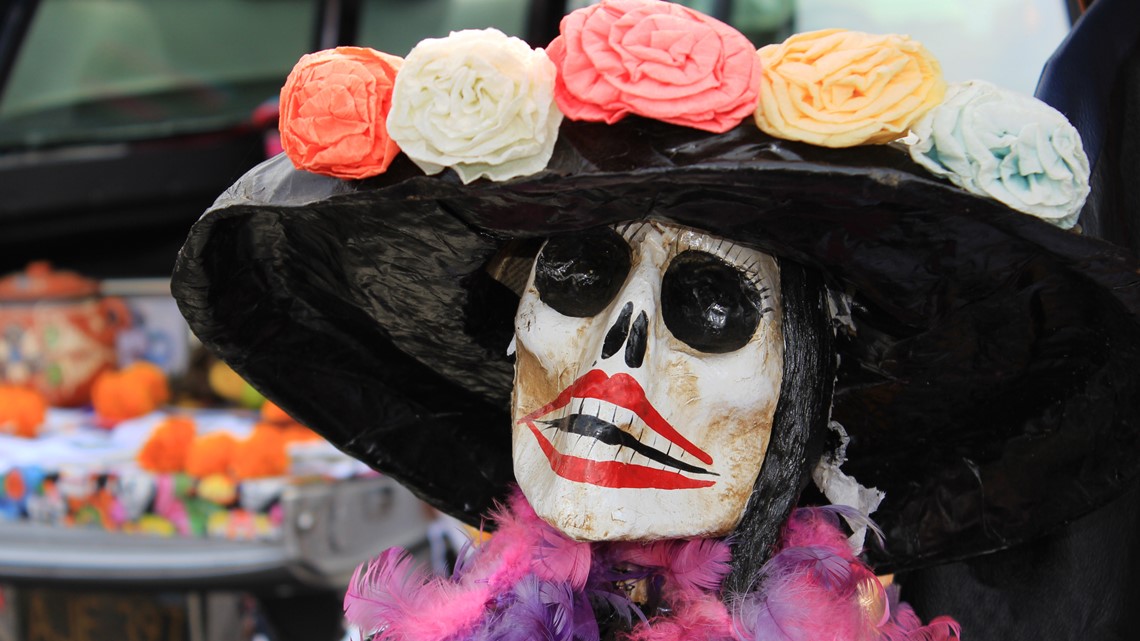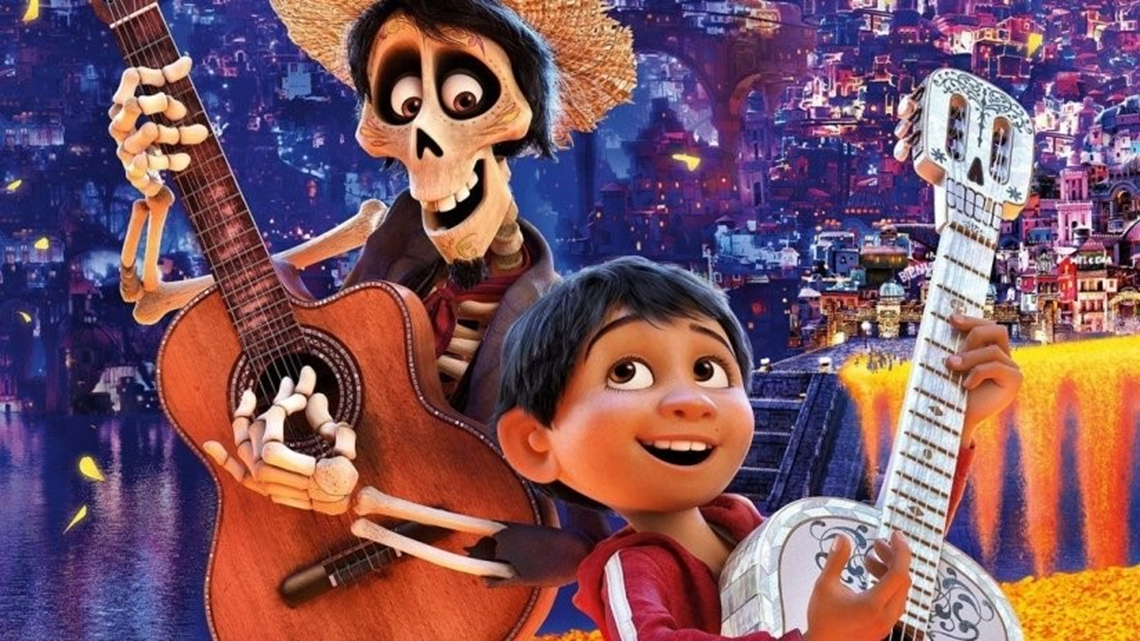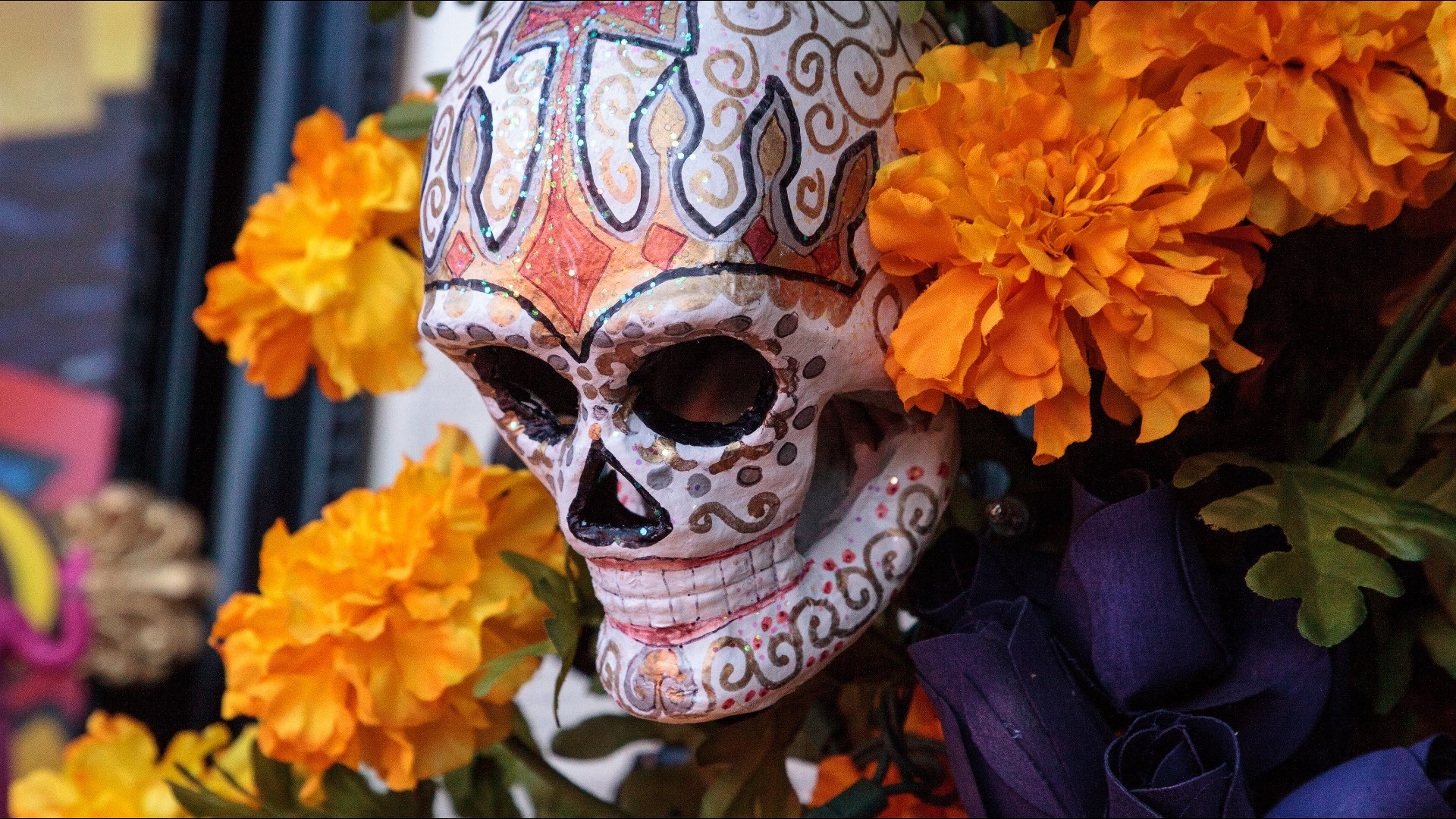DENVER — Dia de los Muertos, known in English as Day of the Dead, is a Mexican holiday that represents when people of Latin American countries and the U.S. honor their ancestors.
It takes place Nov. 1 to Nov. 2.
The holiday commemorates the return of deceased relatives and loved ones to Earth to celebrate with their loved ones during the two-day period, according to UNESCO. The celebration also represents how influential Mexico's indigenous communities were when developing the holiday.
The holiday combined pre-Hispanic religious rites brought by Spanish colonizers and indigenous Aztec rituals, according to National Geographic. Dia de los Muertos is celebrated on All Saints Day and All Souls Day, two days that are part of the Catholic calendar.
The holiday's rituals honoring the dead dates back 3,000 years in pre-Columbian Mesoamerica, according to History.com.
Who is La Catrina?
An internationally known symbol for Dia de los Muertos, La Catrina was created by illustrator José Guadalupe Posada, according to Remezcla.com. During the pre-Revolutionary Mexico, Posada used La Catrina as a way to criticize upper-class society and specifically depicted high-society women.
La Catrina soon became a popular symbol in Mexican culture and served as an influence for notable Mexican artists like Diego Rivera and Jose Clemente Orozco.
The iconic Catrina can be found at the center in Rivera's mural, Dream of a Sunday Afternoon in Alameda Park alongside Posada.


What are altares?
It's a seemingly decorated altar designed as a shrine to both honor and display offerings for ancestors who are returning to Earth to reunite with their loved ones.
Altares are adorned with mementos like photographs, personal belongings, candles, sugar skulls, pan de muerto, flowers (typically marigold flowers), incense and more.
What is pan de muerto?
Pan de muerto, or Bread of the Dead, is a sweet bread baked and offered as a type of ofrenda that is part of an altar. Its delicious texture and intricately detailed designs make these a must while celebrating Dia de los Muertos.
What are ofrendas?
Ofrendas are offerings that are placed on the altars so they're visibly available for ancestors visiting Earth during the holiday.
Aside from photographs and personal belongings set on the altar, candles, sugar skulls, pan de muerto, flowers (typically marigold flowers) and incense are offered as a gift and guide for these ancestors.
How did it impact popular culture?
With the popularity of Disney's animated film "Coco," the holiday served as the film's inspiration and gained a younger fanbase while educating viewers about the holiday's importance in Mexico.
The film follows the journey of a young boy who travels to the Land of the Dead and meets his ancestors, who then teach him about the holiday's significance.


Where to celebrate Dia de los Muertos
This year, there's an array of events and businesses holding their Dia de los Muertos celebrations throughout Denver.
- Dia de los Muertos Annual Celebration at Museo de las Americas on Friday, from 5 to 9 p.m. Free to attend.
- Denver Botanic Gardens' Dia de los Muertos Celebration Saturday from 9 a.m. to 3 p.m. Included with admission to gardens: screening of Coco.
- Dia de los Muertos 5K on Franklin Street on Sunday from 9 a.m. to 11 a.m.
- Day of the Dead Masquerade at the Mirus Gallery in Denver on Friday starting at 9 p.m.
- Colorado Day of the Dead Fest 2019 at the DCIS at Fairmont on Friday from 5 p.m. to 8:30 p.m.
- Dia de los Muertos Latin Fest at The Roxy Theatre on Saturday starting at 8:30 p.m.
- Day of the Dead Family Fiesta at The Longmont Museum on Saturday from 2 p.m. to 6 p.m.
Have a recommendation for where Dia de los Muertos will be celebrated? Email us at webteam@9news.com.
SUGGESTED VIDEOS | Feature stories from 9NEWS

